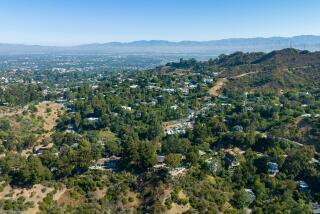Message Heard Loud and Clear: City to Rethink Antenna Limit : Torrance: Ham radio operators show up en masse at the council’s meeting to protest limiting residential antennas to 27 feet. They say it would interfere with communications.
- Share via
Chuck Lobb chose the regular noontime roll-call to issue a call-to-arms.
“The big event is this evening, Sept. 24, at the Torrance City Hall,” he intoned.
Transmitting on a ham radio frequency set up in Torrance for emergencies such as earthquakes or chemical spills, Lobb was talking about a different crisis--a political one.
At stake: the ability of ham operators to continue using antennas tall enough for communications like this lunch-hour communion of the airwaves.
The call went out from a 55-foot antenna in Lobb’s back yard to legions of ham radio operators throughout the city. And hours later, more than 60 ham operators descended on the council chambers to show their displeasure with guidelines limiting antennas in most residential areas to 27 feet.
The council, faced with row after row of grim-faced operators, decided to take a fresh look at regulating antennas.
The event last week was a graphic portrayal of the size and clout of the ham radio community in Torrance, where a concentration of aerospace engineers has helped stir keen interest in amateur radio communications.
“It’s a large group, it’s a very close group, and a very important group from the point of view of emergency preparedness,” said Mayor Katy Geissert. And, as Lobb’s broadcast demonstrated, the ham operators are ever-ready to mobilize.
“If an issue comes up that affects hams, you just get on your radio,” Geissert said.
The debate over regulating antennas in Torrance began, ironically, when some hams earlier this year asked the city to clarify its regulations. The current guidelines, some said, were confusing and led to uneven enforcement. And without specific structural guidelines, Lobb said, some operators had trouble obtaining homeowners insurance for their antennas.
A City Council committee reviewed the matter, finally recommending that the city continue its current guidelines, including the 27-foot height limit. But after hearing from the ham operators, the council voted 7 to 0 to review the regulations.
Ham operators appear relieved and optimistic.
“I think the city has taken a very appropriate position . . . to come up with an administrative procedure that the city and hams can live with,” said Lobb, a retired Hughes Aircraft Co. electrical engineer and chairman of the city Disaster Council.
Lobb was a lead organizer of the Torrance Amateur Radio Assn., a loosely knit network of about 160 ham operator volunteers. The network, which convenes three times a week at 144.400 megahertz for on-the-air meetings, was conceived more than three years ago as a joint project of the city and ham operators to provide communications in an emergency.
But therein lies the problem.
To broadcast a signal, a ham needs an antenna.
Without one, “it’s like trying to get television without an antenna. All you get is snow,” said John Kemper, a Torrance ham radio operator and telecommunications consultant.
To communicate effectively, ham radio operators say, their antennas must be tall enough for the signal to clear structures immediately surrounding them.
But in Torrance, existing city codes limit the height of structures--including antennas--to 27 feet in most residential areas.
Under the code, any ham radio operators wishing to erect a structure taller than 27 feet must apply for a city waiver, which can take up to three months and cost $792 in fees.
Some operators apparently did not know about the code.
“Nobody really knew they had to get a permit or a waiver,” explained one ham who asked not to be identified because he has a longstanding 55-foot antenna.
Despite the code, ham radio antennas apparently have sprouted across Torrance in recent years, according to both hams and city officials. And the city has not cracked down on these errant antennas, choosing instead to respond primarily if and when neighbors complain.
“We haven’t gone through the city and tried to cite all the hams in the city. The staff’s not big enough to do that,” said James Isomoto, city building regulations administrator. Besides, complaints have numbered 10 or fewer each year, he said.
With the regulations now under review, some council members said they would like to see a system that permits taller antennas without forcing hams to pay hundreds of dollars in fees.
“It would seem to me that we need some sort of ordinance in place--but it seems like the price is awfully high,” Councilman Mark Wirth said.
Other cities have crafted regulations specifically for these antennas. In Newport Beach, for instance, a 1988 ordinance requires new antennas to be retractable. Those antennas are permitted to rise to 57 feet when operating, but are restricted to 28 feet when not in use.
The operators commonly transmit at night, when darkness renders their raised antennas invisible. So the Newport Beach system balances aesthetics with ham radio hours, said its City Atty. Robert Burnham.
Said Lobb: “There are many, many cities in the L.A. Basin and across the nation that have very satisfactory relationships with their hams.
“I think Torrance will be fitting into that group.”
More to Read
Sign up for Essential California
The most important California stories and recommendations in your inbox every morning.
You may occasionally receive promotional content from the Los Angeles Times.













